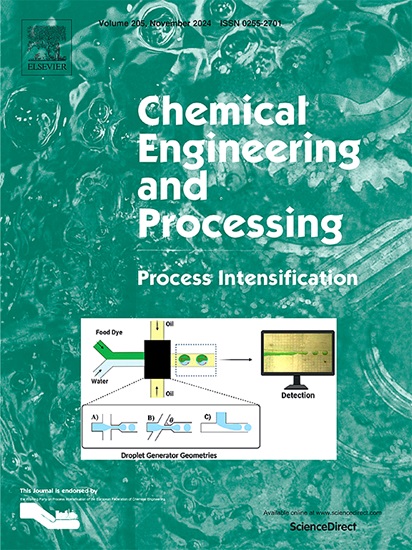Continuous and rapid preparation of urea-formaldehyde resin microspheres with adjustable sizes and structures in a microchannel reactor
IF 3.8
3区 工程技术
Q3 ENERGY & FUELS
Chemical Engineering and Processing - Process Intensification
Pub Date : 2025-01-19
DOI:10.1016/j.cep.2025.110184
引用次数: 0
Abstract
Urea-formaldehyde (UF) resin microspheres prepared by polymerization of urea and formaldehyde have broad applications because of their unique properties. In this paper, we present the preparation of UF microspheres with particle sizes of several microns at 100–180 °C and 1.5 MPa in 6–24 s in a simple microchannel reactor. A urea aqueous solution and formaldehyde solution containing formic acid as the catalyst were used as raw materials. Porous and flower-like UF microspheres as well as dense ones can be readily produced, with the former obtained mainly at lower temperatures, shorter residence times, and lower reactant concentrations. The porous microspheres can further grow to dense ones by prolonging the residence time, increasing the reaction temperature, or using reactants with higher concentrations. Compared with the present mainly used batch process to prepare UF microspheres using the same raw materials which need 3 h at 50 °C, this preparation method is swift and versatile in adjusting the particle size and structure. Moreover, flower-like UF microspheres could be produced and the pore size could be adjusted without additives. The results indicate a more environmentally friendly and economical synthesis method we developed. A possible formation mechanism of UF microspheres with various structures was proposed.

求助全文
约1分钟内获得全文
求助全文
来源期刊
CiteScore
7.80
自引率
9.30%
发文量
408
审稿时长
49 days
期刊介绍:
Chemical Engineering and Processing: Process Intensification is intended for practicing researchers in industry and academia, working in the field of Process Engineering and related to the subject of Process Intensification.Articles published in the Journal demonstrate how novel discoveries, developments and theories in the field of Process Engineering and in particular Process Intensification may be used for analysis and design of innovative equipment and processing methods with substantially improved sustainability, efficiency and environmental performance.

 求助内容:
求助内容: 应助结果提醒方式:
应助结果提醒方式:


